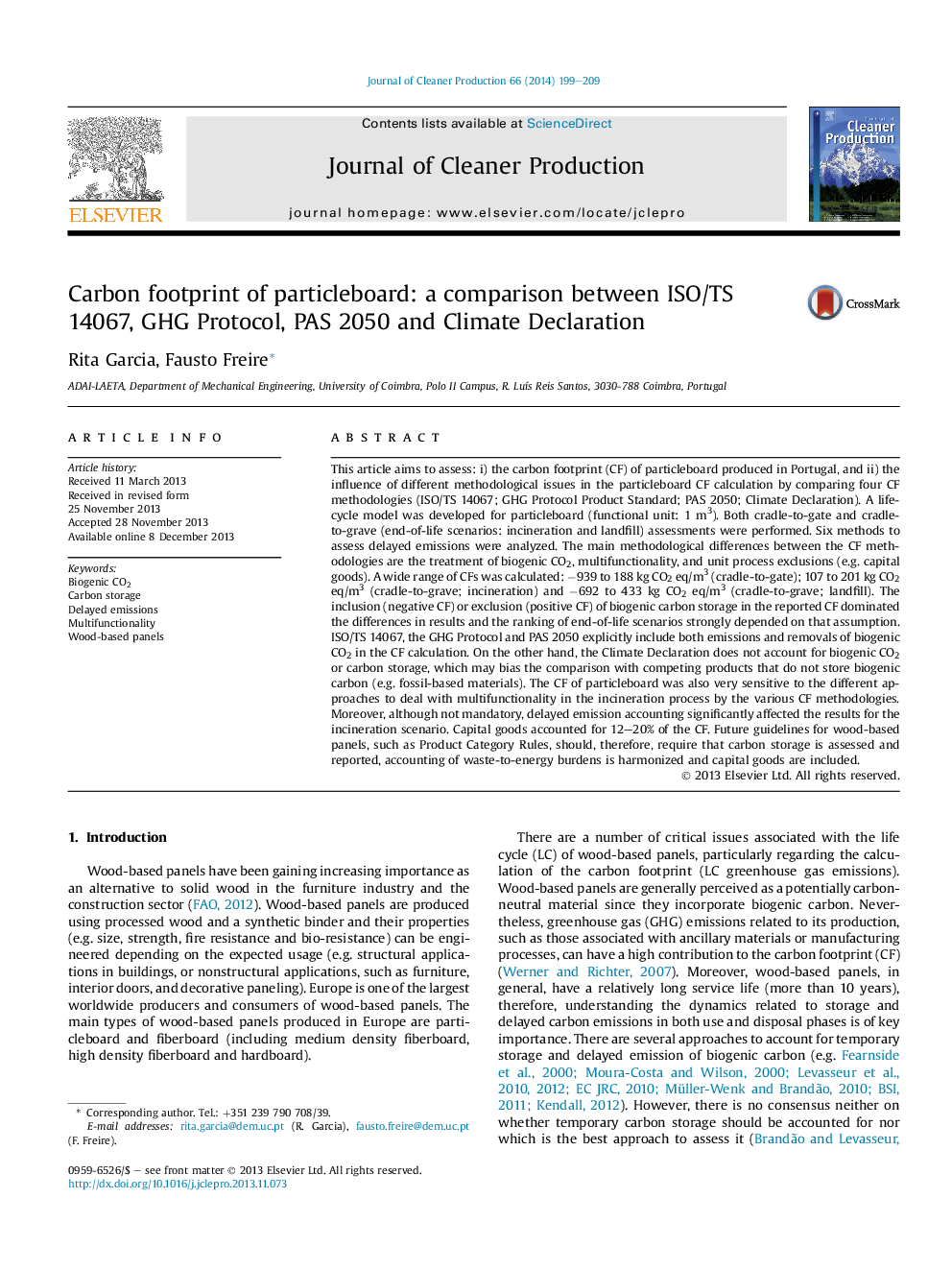| Article ID | Journal | Published Year | Pages | File Type |
|---|---|---|---|---|
| 1744988 | Journal of Cleaner Production | 2014 | 11 Pages |
•The influence of methodological issues in the particleboard CF calculation was assessed.•Biogenic C is addressed differently by the methodologies leading to different CFs.•Accounting for delayed emissions may reduce the particleboard CF by 80–200%.•The CF was very sensitive to different accounting of electricity from incineration.•Capital goods accounted for 12–20% of the particleboard CF and should not be neglected.
This article aims to assess: i) the carbon footprint (CF) of particleboard produced in Portugal, and ii) the influence of different methodological issues in the particleboard CF calculation by comparing four CF methodologies (ISO/TS 14067; GHG Protocol Product Standard; PAS 2050; Climate Declaration). A life-cycle model was developed for particleboard (functional unit: 1 m3). Both cradle-to-gate and cradle-to-grave (end-of-life scenarios: incineration and landfill) assessments were performed. Six methods to assess delayed emissions were analyzed. The main methodological differences between the CF methodologies are the treatment of biogenic CO2, multifunctionality, and unit process exclusions (e.g. capital goods). A wide range of CFs was calculated: −939 to 188 kg CO2 eq/m3 (cradle-to-gate); 107 to 201 kg CO2 eq/m3 (cradle-to-grave; incineration) and −692 to 433 kg CO2 eq/m3 (cradle-to-grave; landfill). The inclusion (negative CF) or exclusion (positive CF) of biogenic carbon storage in the reported CF dominated the differences in results and the ranking of end-of-life scenarios strongly depended on that assumption. ISO/TS 14067, the GHG Protocol and PAS 2050 explicitly include both emissions and removals of biogenic CO2 in the CF calculation. On the other hand, the Climate Declaration does not account for biogenic CO2 or carbon storage, which may bias the comparison with competing products that do not store biogenic carbon (e.g. fossil-based materials). The CF of particleboard was also very sensitive to the different approaches to deal with multifunctionality in the incineration process by the various CF methodologies. Moreover, although not mandatory, delayed emission accounting significantly affected the results for the incineration scenario. Capital goods accounted for 12–20% of the CF. Future guidelines for wood-based panels, such as Product Category Rules, should, therefore, require that carbon storage is assessed and reported, accounting of waste-to-energy burdens is harmonized and capital goods are included.
